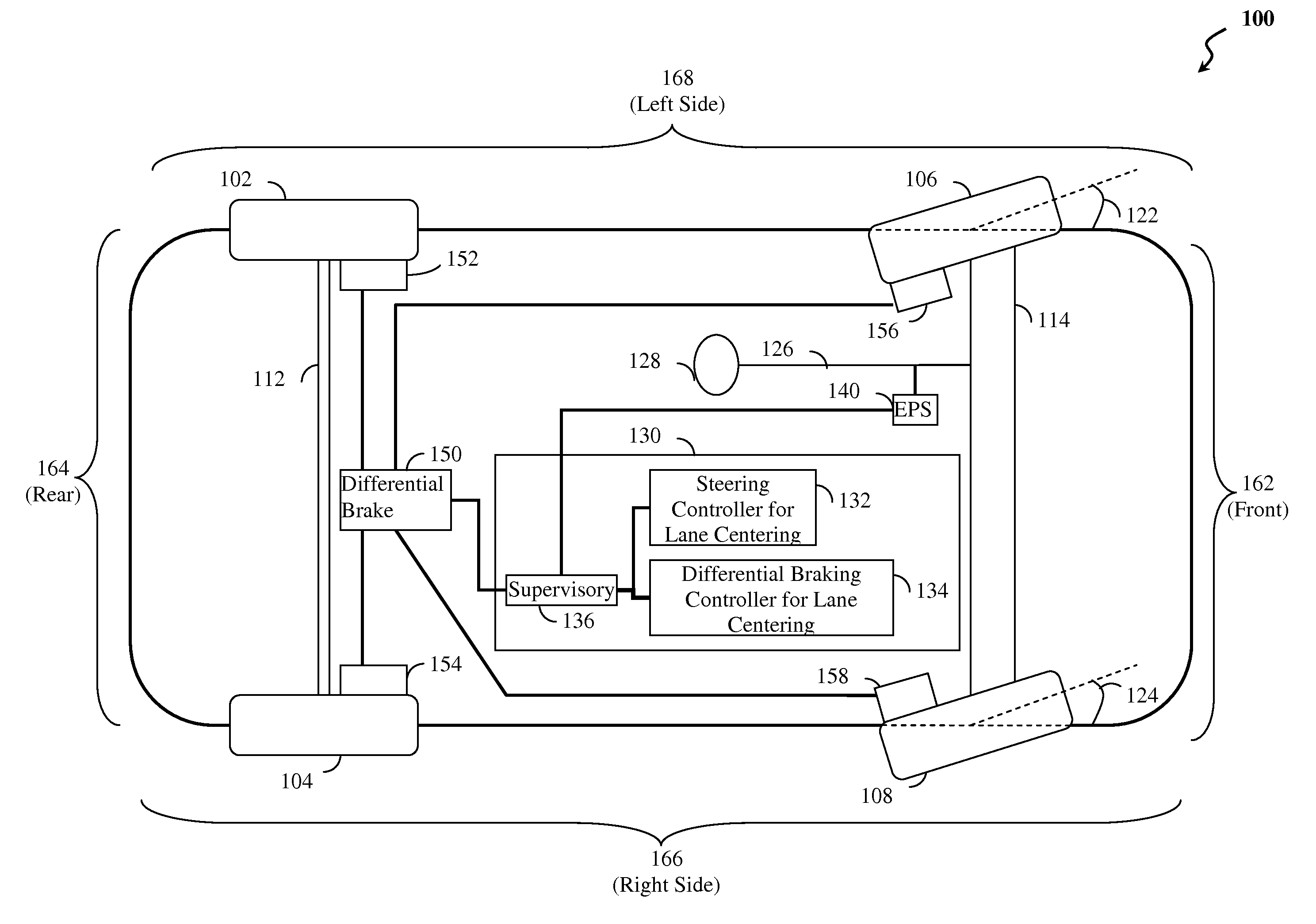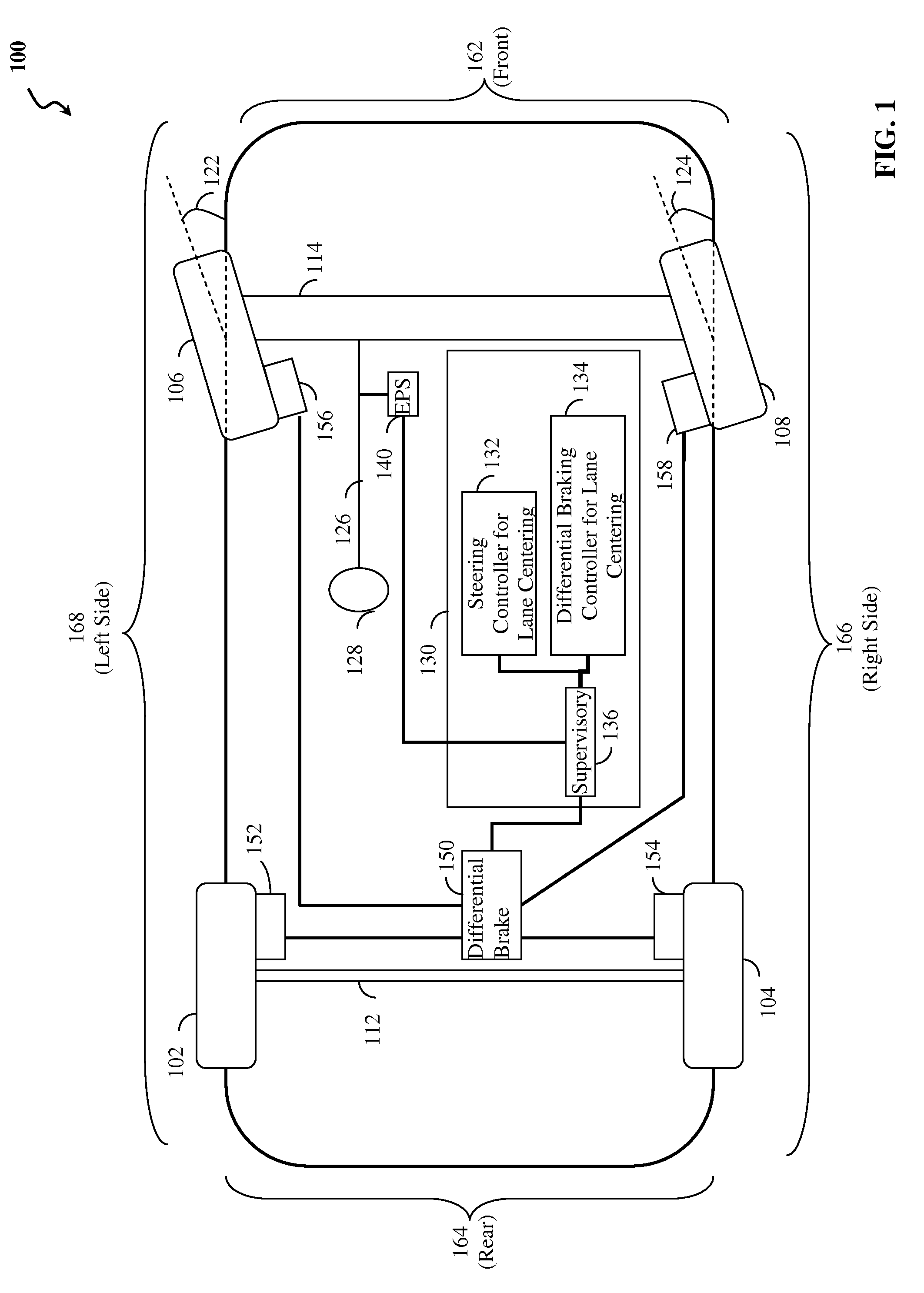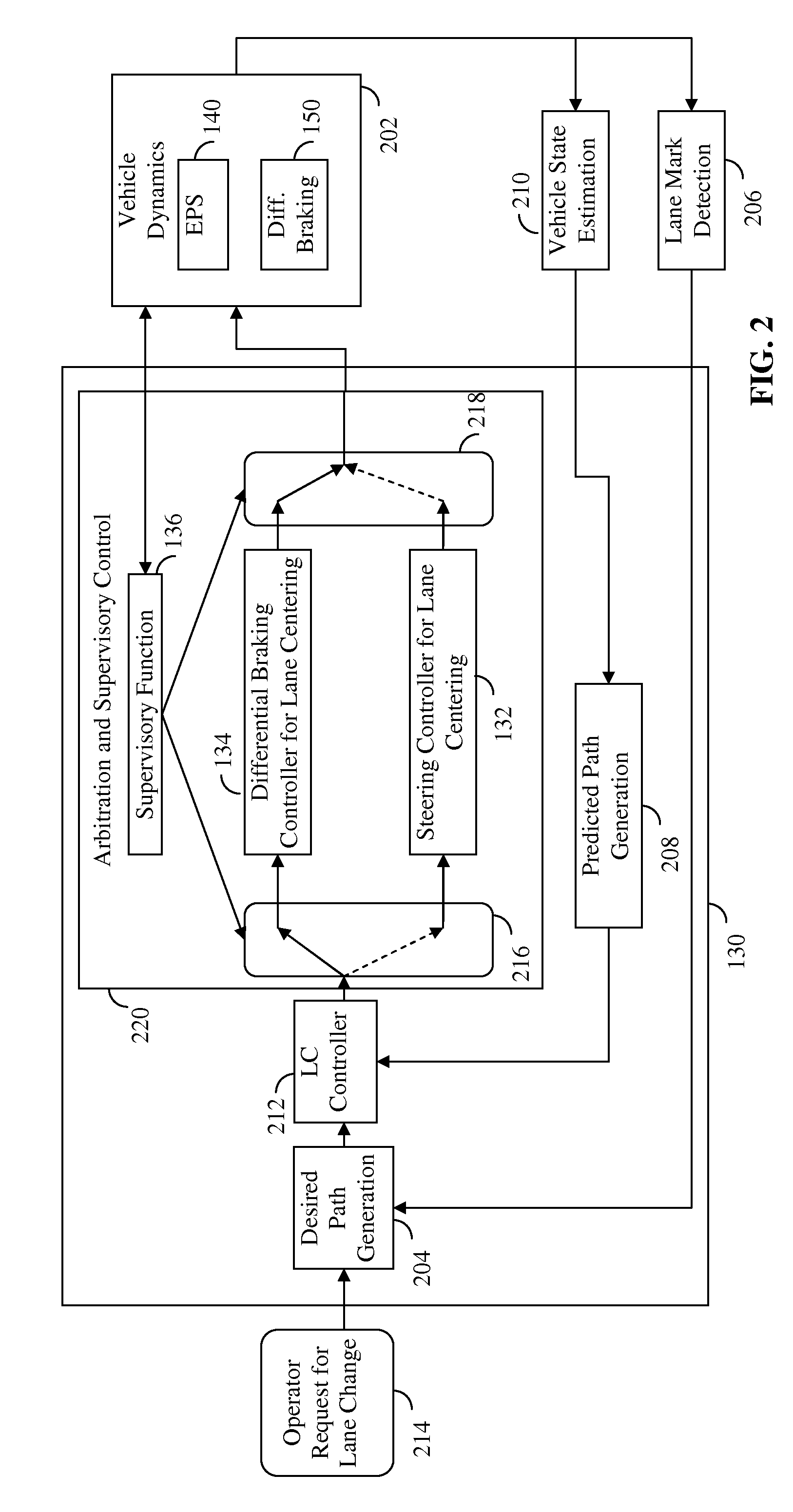Lane centering fail-safe control using differential braking
a technology of fail-safe control and differential braking, applied in the direction of non-deflectable wheel steering, underwater vessels, braking components, etc., can solve the problems of lc system failure, eps system failure, and inability to provide automatic steering control
- Summary
- Abstract
- Description
- Claims
- Application Information
AI Technical Summary
Benefits of technology
Problems solved by technology
Method used
Image
Examples
Embodiment Construction
[0039]In the following detailed description, numerous specific details are set forth in order to provide a thorough understanding of the invention. However, it will be understood by those skilled in the art that the present invention may be practiced without these specific details. In other instances, well-known methods, procedures, and components have not been described in detail so as not to obscure the present invention.
[0040]Reference is made to FIG. 1 which illustrates elements of a lane centering (LC) system with fail-safe differential braking according to an embodiment of the present invention. FIG. 1 depicts vehicle 100, which may be an automobile or other vehicle, having front side 162, rear side 164, right side 166 and left side 168 (e.g. viewing the vehicle from above). Vehicle 100 is shown with wheels, e.g. left rear wheel 102, right rear wheel 104, left front wheel 106, right front wheel 108. In other examples, vehicles having fewer wheels, e.g. 3, or more wheels, e.g. ...
PUM
 Login to View More
Login to View More Abstract
Description
Claims
Application Information
 Login to View More
Login to View More - R&D
- Intellectual Property
- Life Sciences
- Materials
- Tech Scout
- Unparalleled Data Quality
- Higher Quality Content
- 60% Fewer Hallucinations
Browse by: Latest US Patents, China's latest patents, Technical Efficacy Thesaurus, Application Domain, Technology Topic, Popular Technical Reports.
© 2025 PatSnap. All rights reserved.Legal|Privacy policy|Modern Slavery Act Transparency Statement|Sitemap|About US| Contact US: help@patsnap.com



